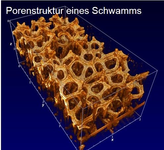Functional 3.0-T MR Assessment of Higher Cognitive Function : Are there advantages over 1.5-T imaging?
Radiology : a monthly journal devoted to clinical radiology and allied sciences. Bd. 234. H. 3. Radiological Society of North America (RSNA) 2005 S. 860 - 868
Erscheinungsjahr: 2005
ISBN/ISSN: 0033-8419
Publikationstyp: Zeitschriftenaufsatz
Sprache: Englisch
Doi/URN: 10.1148/radiol.2343031565
| Geprüft | Bibliothek |
Inhaltszusammenfassung
PURPOSE: To compare cortical activation patterns associated with manual motor decision tasks at 1.5- and 3.0-T functional magnetic resonance (MR) imaging. MATERIALS AND METHODS: The local ethics committee approved this study, and informed written consent was obtained. Ten right-handed healthy volunteers (eight men and two women; mean age, 35 years +/- 7 [standard deviation]) underwent functional MR imaging twice, once at 1.5 T and once at 3.0 T, while performing cognitive tasks that demanded ...PURPOSE: To compare cortical activation patterns associated with manual motor decision tasks at 1.5- and 3.0-T functional magnetic resonance (MR) imaging. MATERIALS AND METHODS: The local ethics committee approved this study, and informed written consent was obtained. Ten right-handed healthy volunteers (eight men and two women; mean age, 35 years +/- 7 [standard deviation]) underwent functional MR imaging twice, once at 1.5 T and once at 3.0 T, while performing cognitive tasks that demanded manual motor decisions (letter-finger matching and lexical and semantic decisions). While stimulus presentation was blocked, an event-related model was employed to analyze subjects' individual responses. A group analysis of functional data was performed with a t test of 1.5- and 3.0-T results in the 10 subjects. RESULTS: Manual motor decisions activated a widespread network of motor- (primary motor, posterior parietal) and decision-related areas (superior frontal cortex or anterior cingulate) at both field strengths (P <.05, corrected). Moreover, additional functional activation was detected in medial (supplementary motor area) and dorsal premotor regions (P <.05, corrected) at 3.0-T functional MR imaging, which was not detectable with corresponding 1.5-T imaging. The mean t value for peak voxels in activated areas detectable with both systems was 1.3 times larger at 3.0 T than that at 1.5 T. CONCLUSION: Functional 3.0-T MR imaging allows detection of additional activation in cortical areas involved in higher executive motor functions compared with functional 1.5-T MR imaging.» weiterlesen» einklappen
Klassifikation
DFG Fachgebiet:
Medizin
DDC Sachgruppe:
Medizin

